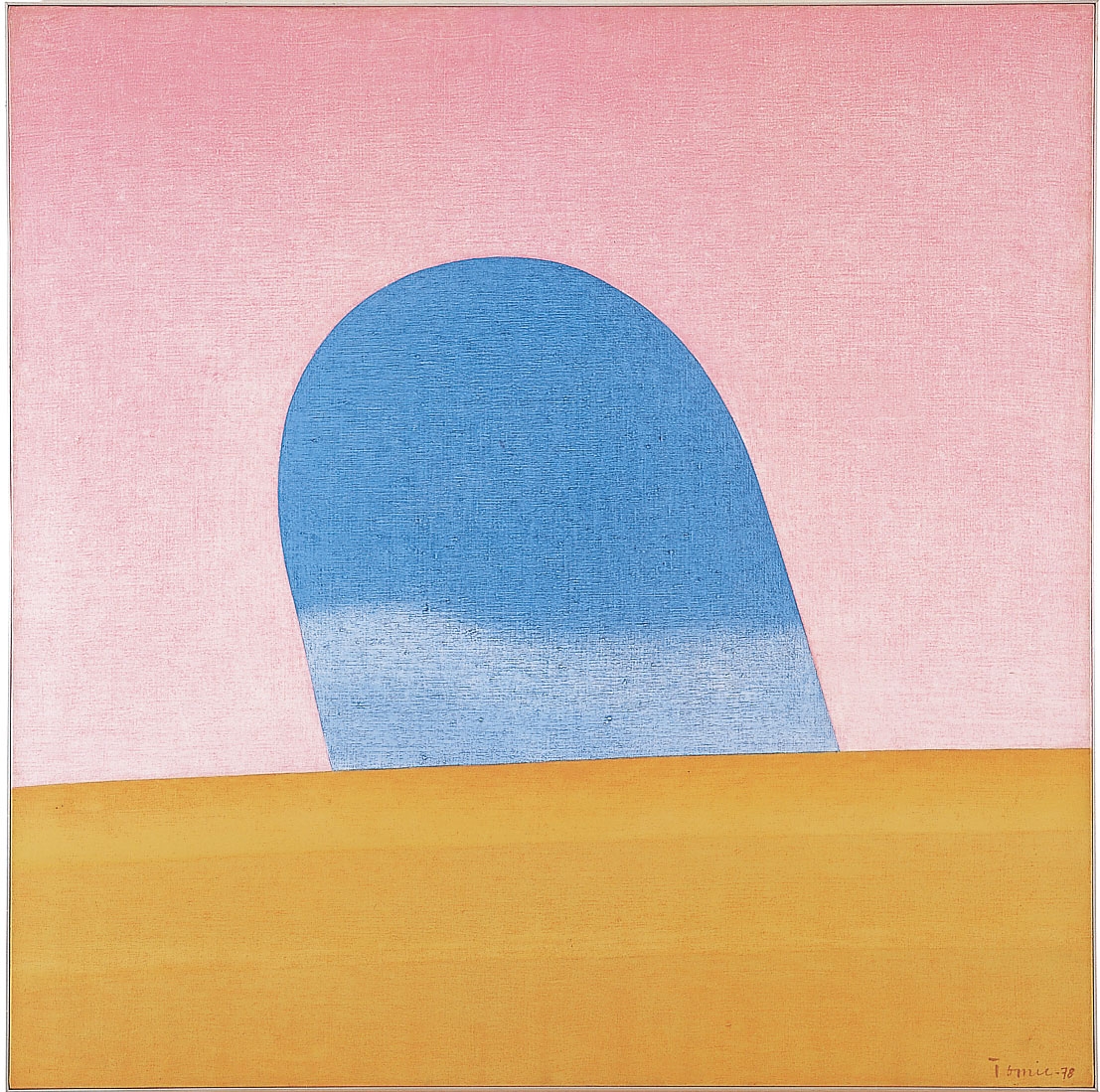It’s hard to overstate the impact of Tomie Ohtake’s oeuvre on São Paulo, or the aptness of its abstract beauty in this most visually eclectic, jumbled of cities. If you’re familiar with them, works by the ninety-nine-year-old painter, sculptor and printmaker are everywhere in the city: in private homes and as prints in institutions and businesses, and in public works that include lavish mosaics on the metrô, and a stunning sculptural monument to the city’s Japanese immigration beside the Centro Cultural São Paulo.
It would have been an obvious move for the curators of this exhibition, the first of three planned this centenary year at the institute that bears Ohtake’s name, to have sought out direct traces of Ohtake’s influence on the artists that have accompanied her 60-year trajectory. Instead, with obvious pleasure, they freely associate shape with shape, colour with colour, and Ohtake’s subtle lines with the gestures of some 45 Brazilian artists, from 1950s contemporaries like Flavio-Shiró through Mira Schendel and Cildo Meireles, to 2013 successors like Chiara Banfi and Tiago Judas. The exhibition is loosely split between colour, gesture and material; but the relations are way more fluid, intuitive and witty than that.
It’s the tiny connections you make as you draw close and notice soft purple and yellow bruises glowing through a rich blue Ohtake 2000 canvas (the artist refrains from titling any of her work), alongside a pair of boxes (2011, 2012) by Sérgio Sister, pink winking though pale grey slats. It’s the reared-up sinuosity of a 1999 tubular steel piece by Ohtake, the centrepiece in the hall between the exhibition’s two salas, and the white slither across the floor of Fantasma (1998), a Jac Leirner sculpture in paper and steel wire. That points in turn towards a pair of dark paintings, red and black (1984), in which Ohtake’s precise quarter-circle gestures are hung beside a film documenting the creation of Carla Chaim’s wall-painting Nova Lua (2013), her body a compass, the sweeping circles on the wall an inexorable function of the length of her arm as she draws them.
The effect of the Ohtake pieces being interspersed with works by so many others is to provide a moment’s distance between her artworks: you leave reflecting on images made by many of the artists; but the main event is indisputably Tomie, and particularly her later, large-scale paintings with their subtly wielded, insistent power and volume.
On the surface, among the works with which Ohtake’s have least in common are the almost invisibly delicate deliriums created by Fernanda Gomes. A ball of natural fibres no more than 8cm in diameter haunts the wall it’s hung on, casting the wisp of a shadow. In a second work by Gomes, a tiny magnet hung by thread from a pin in the wall meets a threaded needle attached to another magnet, the pair looping and spinning in miniature space. Beside it, a huge canvas by Ohtake contains a round painted mass, textured taupe on cream like a pudgy Plasticine planet. Aside from some slight correspondences of shape, what they share, and what Ohtake’s work epitomises, is being art from the heart: shapes and masses out of wordless waking dreams; and weights, colours, textures and volumes that have been subtly felt and deduced, rather than ever heard or seen.
This article was first published in the May 2013 issue.
